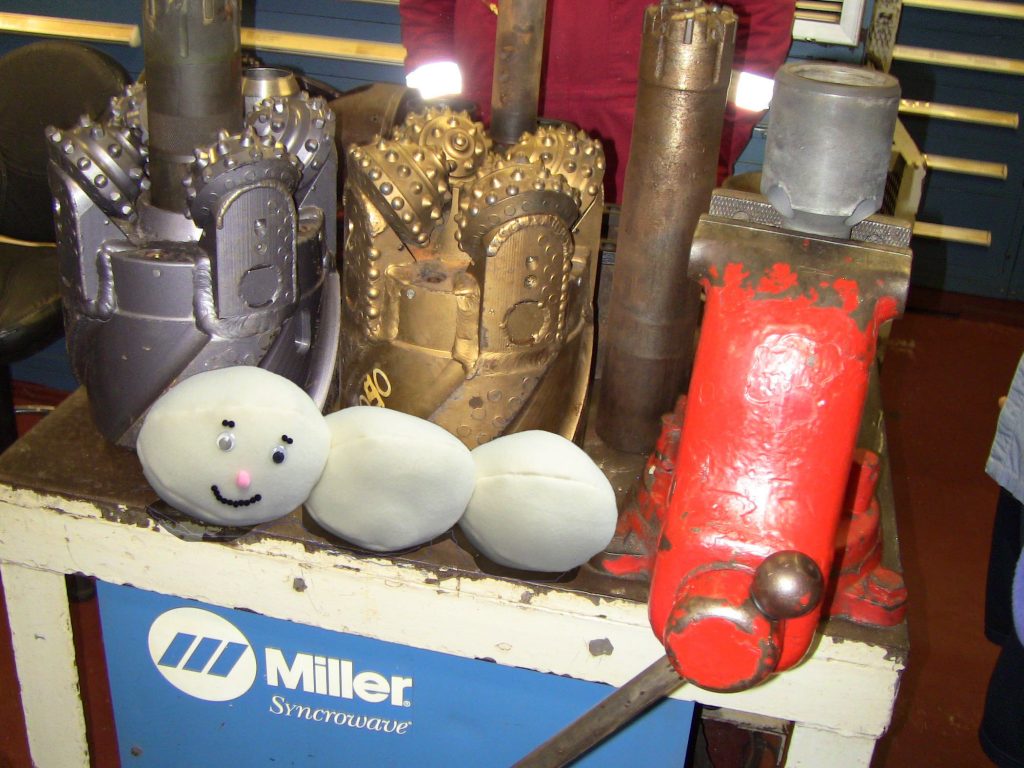
Drilling
Hi! Today we will talk about the types of coring that can be done. For the past few days, the scientists have been interested in the sediments of the ocean floor. Since the sediments are soft, the crew "pushes" a hollow tube, called a corer into the sediments. Using high pressure the corer is shot out the bottom of the drill pipe and it collects a long sample of the sediments. Today we are interested in getting samples of the hard basalt that lies below the sediments. Since the piston corer can’t be used, a different piece of equipment must be installed on the end of the drill pipe. The rotary corer has extremely hard teeth that grind up the rock as it advances. A long narrow sample (the same size as the sediment cores) is pushed up into the clear plastic core liner. Drilling mud (watery clay) and seawater are pumped down the drill string to serve as a lubricant and to clear the hole of rock cuttings so that the drill bit won’t get stuck.